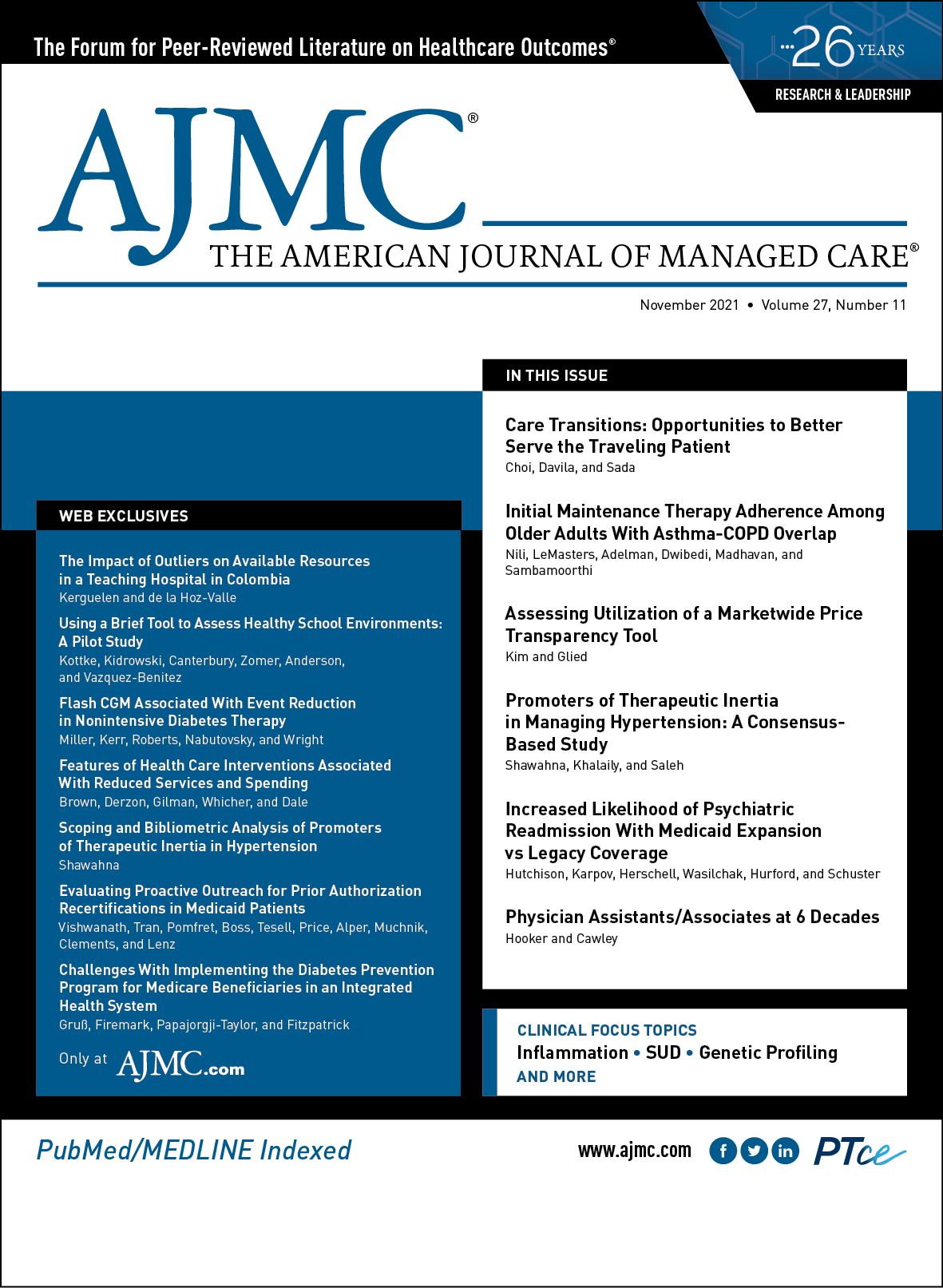- Center on Health Equity & Access
- Clinical
- Health Care Cost
- Health Care Delivery
- Insurance
- Policy
- Technology
- Value-Based Care
The Impact of Outliers on Available Resources in a Teaching Hospital in Colombia
This letter describes the experience of long-stay patients and provides a perspective of the need for more studies on outliers’ impact on health care.
Am J Manag Care. 2021;27(11):e365. https://doi.org/10.37765/ajmc.2021.88778
We read with great interest the article by Ward et al published in the March 2021 issue of The American Journal of Managed Care®.1 The case report was interesting in many aspects, particularly those related to the impact of outliers on the use of available resources, an important issue with scarce evidence.2 We congratulate the authors for highlighting in-hospital complications, hospital-acquired infections, and discharge to a facility as predictors of increasing hospital days for patients and increasing patients’ risk of becoming length-of-stay outliers.
The report from Ward et al1 is a reference for our institution. In our experience at the Fundación Santa Fe de Bogotá (FSFB)—a highly complex and nonprofit hospital in Bogotá, Colombia, focused on providing superior value health services, with local certification and accreditation with a seal of excellence, as well as by the Joint Commission International standards—the management of long-stay patients or outliers has been a constant theme in internal management and the relationships with our patients.
Using the calculation method for outliers provided by the International Refined Diagnosis-Related Groups,3 a cumulative percentage of outliers of 3.5% was observed between January 2019 and June 2021 at FSFB. However, in the calculation of outliers excluding patients with COVID-19 during 2020, an adjusted percentage of 2.5% was observed. The impact of the outliers on cost management was significant. The outliers (2.5% of all patients admitted) accounted for 16% of the total days of stay in the hospital of patients in FSFB. Therefore, the outliers (2.5% of the patients) had an impact on the global length of stay of the hospital, an average increase of 0.8 days of hospital stay to the inlier patients.
The analysis of financial variables such as the mean cost and stay length showed that an outlier cost 5.1 times more and stayed 5.3 times longer than an inlier. The analysis of intensive care unit (ICU) data showed that an outlier in the ICU cost 4.7 times more and had a stay 4.9 times longer than that of an inlier patient in the ICU. Also, a deceased outlier patient cost 3.6 times more and had a stay 3.7 times longer than that of a deceased inlier.
Finally, analyzing 4 safety events (central line–associated bloodstream infection, catheter-associated urinary tract infection, ventilator-associated pneumonia, and surgical site infection), the outliers who experienced any of these events cost twice as much and had hospital stays twice as long as patients who experienced any of these events but who were considered inliers. However, the impact of outliers on the resource management of organizations is still an area with many aspects to study, including the causes that influence a patient being an outlier and whether outlier status is due to variability in the management of patients by care teams or to the administrative processes of the provider/insurer.
Author Affiliations: Fundación Santa Fe de Bogotá (CK, JAdlH-V), Bogotá, Colombia.
Source of Funding: None.
Author Disclosures: The authors report no relationship or financial interest with any entity that would pose a conflict of interest with the subject matter of this article.
Authorship Information: Concept and design (CK, JAdlH-V); drafting of the manuscript (CK, JAdlH-V); and critical revision of the manuscript for important intellectual content (CK, JAdlH-V).
Address Correspondence to: José Antonio de la Hoz-Valle, MD, MSc, Fundación Santa Fe de Bogotá, Calle 119A#7-49, Bogotá, Colombia. Email: jossedela@hotmail.com.
REFERENCES
1. Ward C, Patel V, Elsaid MI, Jainsinghani P, Sharma R. A case-control study of length of stay outliers. Am J Manag Care. 2021;27(3):e66-e71. doi:10.37765/ajmc.2021.88600
2. Pirson M, Martins D, Jackson T, Dramaix M, Leclercq P. Prospective casemix-based funding, analysis and financial impact of cost outliers in all-patient refined diagnosis related groups in three Belgian general hospitals. Eur J Health Econ. 2006;7(1):55-65. doi:10.1007/s10198-005-0331-0
3. 3M International Refined-DRGs (3M IR-DRGs). 3M. Accessed July 1, 2021. https://www.3m.com/3M/en_US/health-information-systems-us/drive-value-based-care/patient-classification-methodologies/ir-drgs/

Integrated Care for Chronic Conditions: A Randomized Care Management Trial
December 3rd 2025The authors sought to understand the differential impact of payer-led community-based care management approaches on stakeholder-oriented outcomes for publicly insured adults with multiple chronic conditions.
Read More

